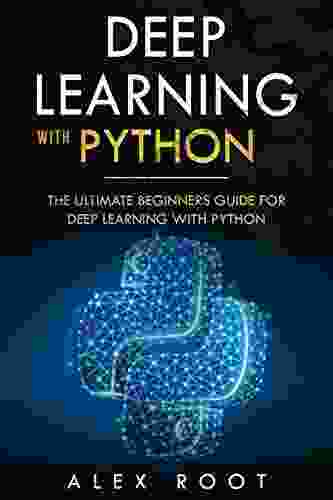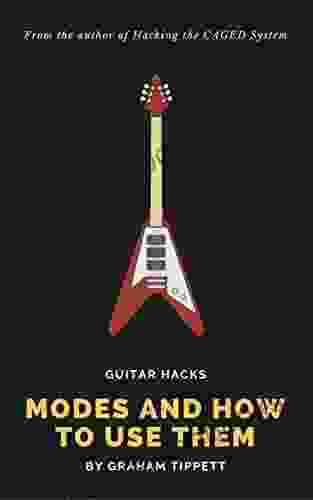The Ultimate Beginner's Guide to Deep Learning with Python

Table of contents
Overview
Why Deep Learning?
Prerequisites
Getting Started
Building Your First Deep Learning Model
Training and Evaluating Your Model
Deploying Your Model
### Overview
Deep learning is a rapidly growing field of artificial intelligence (AI) that is transforming the way we interact with computers. Deep learning algorithms can learn from vast amounts of data, and they are being used to solve a wide range of problems, from image recognition to natural language processing.
If you're interested in learning about deep learning, but you're not sure where to start, this guide is for you. We'll cover everything you need to know to get started with deep learning, from the basics of neural networks to how to build and train your own deep learning models.
### Why Deep Learning?
Deep learning is a powerful tool that can be used to solve a wide range of problems. Here are just a few examples of what deep learning can be used for:
4.7 out of 5
| Language | : | English |
| File size | : | 752 KB |
| Text-to-Speech | : | Enabled |
| Screen Reader | : | Supported |
| Enhanced typesetting | : | Enabled |
| Word Wise | : | Enabled |
| Print length | : | 287 pages |
| Lending | : | Enabled |
- Image recognition: Deep learning algorithms can be used to identify objects in images with a high degree of accuracy. This technology is being used in a variety of applications, such as facial recognition, medical diagnosis, and quality control.
- Natural language processing: Deep learning algorithms can be used to understand and generate human language. This technology is being used in a variety of applications, such as machine translation, chatbots, and search engines.
- Speech recognition: Deep learning algorithms can be used to recognize speech with a high degree of accuracy. This technology is being used in a variety of applications, such as voice assistants, dictation software, and customer service hotlines.
- Predictive analytics: Deep learning algorithms can be used to make predictions about future events. This technology is being used in a variety of applications, such as fraud detection, risk management, and weather forecasting.
### Prerequisites
Before you get started with deep learning, you'll need to have a basic understanding of the following topics:
- Python programming
- Linear algebra
- Calculus
- Probability and statistics
If you're not familiar with any of these topics, don't worry! There are plenty of resources available online that can help you get up to speed.
### Getting Started
The first step to getting started with deep learning is to install the necessary software. We recommend using the Anaconda distribution, which includes all of the necessary libraries and tools for deep learning.
Once you have Anaconda installed, you can open a terminal window and type the following command:
conda create -n deeplearning python=3.6
This command will create a new environment called deeplearning that has Python 3.6 installed. You can then activate the environment by typing the following command:
source activate deeplearning
Now that you have the necessary software installed, you can start learning about deep learning. There are a number of online courses and tutorials that can help you get started. We recommend the following resources:
### Building Your First Deep Learning Model
Once you have a basic understanding of deep learning, you can start building your own deep learning models. The first step is to choose a dataset to train your model on. There are a number of publicly available datasets that you can use, such as the MNIST dataset of handwritten digits.
Once you have chosen a dataset, you can start building your deep learning model. The simplest type of deep learning model is a neural network. A neural network is a network of interconnected nodes that can learn from data.
To build a neural network, you need to specify the number of layers and the number of nodes in each layer. The number of layers and nodes will depend on the complexity of the task that you are trying to solve.
Once you have built your neural network, you can train it on your dataset. Training a neural network involves feeding the network data and adjusting the weights of the network's connections. The weights are adjusted so that the network makes better predictions on the data.
Once your neural network is trained, you can evaluate its performance on a test set. The test set is a set of data that the network has not seen before. The performance of your network on the test set will give you an idea of how well your network will generalize to new data.
### Training and Evaluating Your Model
Training and evaluating your deep learning model is an iterative process. You will need to train your model multiple times and evaluate its performance on different test sets. This process will allow you to fine-tune your model and improve its performance.
Here are some tips for training and evaluating your deep learning model:
- Use a validation set to avoid overfitting. A validation set is a set of data that is used to evaluate the performance of your model during training. This will help you to avoid overfitting your model to the training data.
- Use early stopping to prevent overtraining. Early stopping is a technique that stops the training process when the model's performance on the validation set starts to decrease. This will help you to avoid overtraining your model.
- Use cross-validation to get a more accurate estimate of your model's performance. Cross-validation is a technique that involves training and evaluating your model on multiple different subsets of your data. This will give you a more accurate estimate of your model's performance on new data.
### Deploying Your Model
Once you are satisfied with the performance of your deep learning model, you can deploy it to production. This involves making your model available to other users so that they can use it to solve their own problems.
There are a number of different ways to deploy a deep learning model. You can deploy your model as a web service, a mobile app, or a desktop application. The best way to deploy your model will depend on the specific use case.
Deep learning is a powerful tool that can be used to solve a wide range of problems. This guide has provided you with the basics of deep learning and how to build and train your own deep learning models. With practice, you can use deep learning to solve your own problems and make the world a better place.
4.7 out of 5
| Language | : | English |
| File size | : | 752 KB |
| Text-to-Speech | : | Enabled |
| Screen Reader | : | Supported |
| Enhanced typesetting | : | Enabled |
| Word Wise | : | Enabled |
| Print length | : | 287 pages |
| Lending | : | Enabled |
Do you want to contribute by writing guest posts on this blog?
Please contact us and send us a resume of previous articles that you have written.
 Book
Book Novel
Novel Page
Page Chapter
Chapter Text
Text Story
Story Genre
Genre Reader
Reader Library
Library Paperback
Paperback E-book
E-book Magazine
Magazine Newspaper
Newspaper Paragraph
Paragraph Sentence
Sentence Bookmark
Bookmark Shelf
Shelf Glossary
Glossary Bibliography
Bibliography Foreword
Foreword Preface
Preface Synopsis
Synopsis Annotation
Annotation Footnote
Footnote Manuscript
Manuscript Scroll
Scroll Codex
Codex Tome
Tome Bestseller
Bestseller Classics
Classics Library card
Library card Narrative
Narrative Biography
Biography Autobiography
Autobiography Memoir
Memoir Reference
Reference Encyclopedia
Encyclopedia Gareth Edwards
Gareth Edwards Karen Snyder
Karen Snyder Harley Ford Hodges
Harley Ford Hodges John Maynard Keynes
John Maynard Keynes Shaun Horton
Shaun Horton Kirsty Hartley
Kirsty Hartley Trent Shelton
Trent Shelton Kathleen Ernst
Kathleen Ernst Lynn Moore
Lynn Moore Noora Lori
Noora Lori Ashraf H A Rushdy
Ashraf H A Rushdy Barbara Ransby
Barbara Ransby Allen W Smith
Allen W Smith Jethro Tull
Jethro Tull Ellen Rendle
Ellen Rendle Corinne Michaels
Corinne Michaels Richard M Ankers
Richard M Ankers Elysia Strife
Elysia Strife Elizabeth Dutro
Elizabeth Dutro Stephen Mansfield
Stephen Mansfield
Light bulbAdvertise smarter! Our strategic ad space ensures maximum exposure. Reserve your spot today!
 Bo CoxFollow ·16.2k
Bo CoxFollow ·16.2k Craig CarterFollow ·16.1k
Craig CarterFollow ·16.1k Patrick RothfussFollow ·16.6k
Patrick RothfussFollow ·16.6k Camden MitchellFollow ·3.2k
Camden MitchellFollow ·3.2k David MitchellFollow ·3.3k
David MitchellFollow ·3.3k Neil GaimanFollow ·5.9k
Neil GaimanFollow ·5.9k Bill GrantFollow ·3.2k
Bill GrantFollow ·3.2k Jay SimmonsFollow ·9.7k
Jay SimmonsFollow ·9.7k

 Julian Powell
Julian PowellShetland Pony: Comprehensive Coverage of All Aspects of...
The Shetland...

 Cason Cox
Cason CoxHow Anaesthetics Changed the World: A Medical Revolution...
Imagine a world where surgery is an...

 Harold Powell
Harold PowellUnleash Your Inner Songwriter: The Ultimate Guide for...
Calling all aspiring songwriters!...

 Nikolai Gogol
Nikolai GogolUnleash Your Artistic Potential: Quick Draw Anatomy for...
In the dynamic and visually...

 Tim Reed
Tim ReedThe Rock 'n' Roll Life of Legendary Sax Man Bobby Keys
The Rock 'n' Roll Life...

 Damon Hayes
Damon HayesMoney Management Activities for Youth: A Guide to...
In an era marked by rapidly...
4.7 out of 5
| Language | : | English |
| File size | : | 752 KB |
| Text-to-Speech | : | Enabled |
| Screen Reader | : | Supported |
| Enhanced typesetting | : | Enabled |
| Word Wise | : | Enabled |
| Print length | : | 287 pages |
| Lending | : | Enabled |












